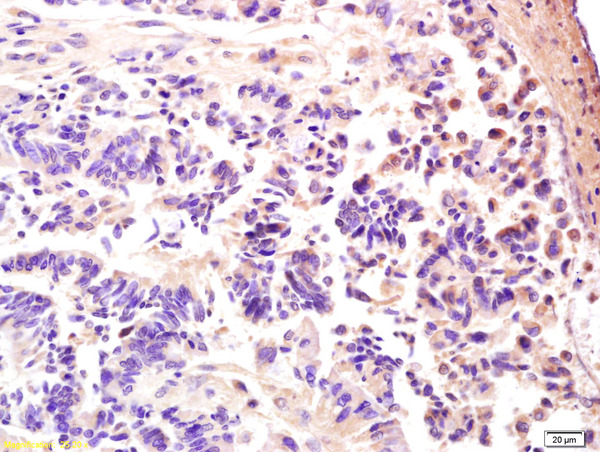
Western blot All lanes: 5-AMP-activated protein kinase subunit gamma-3 antibody at 5ug/ml Lane 1: Hela whole cell lysate Lane 2: HepG2 whole cell lysate Secondary Goat polyclonal to rabbit IgG at 1/10000 dilution Predicted band size: 55, 52 kDa Observed band size: 55 kDa
PRKAG3 Antibody
CSB-PA883379ESR1HU
ApplicationsWestern Blot, ELISA
Product group Antibodies
TargetPRKAG3
Overview
- SupplierCusabio
- Product NamePRKAG3 Antibody
- Delivery Days Customer20
- ApplicationsWestern Blot, ELISA
- CertificationResearch Use Only
- ClonalityPolyclonal
- ConjugateUnconjugated
- Gene ID53632
- Target namePRKAG3
- Target descriptionprotein kinase AMP-activated non-catalytic subunit gamma 3
- Target synonyms5'-AMP-activated protein kinase subunit gamma-3; 5'-AMP-activated protein kinase, gamma-3 subunit; AMPK gamma3; AMPK gamma-3 chain; AMPK subunit gamma-3; AMPKG3; protein kinase, AMP-activated, gamma 3 non-catalytic subunit; SMGMQTL
- HostRabbit
- IsotypeIgG
- Protein IDQ9UGI9
- Protein Name5'-AMP-activated protein kinase subunit gamma-3
- Scientific DescriptionAMP/ATP-binding subunit of AMP-activated protein kinase (AMPK), an energy sensor protein kinase that plays a key role in regulating cellular energy metabolism. In response to reduction of intracellular ATP levels, AMPK activates energy-producing pathways and inhibits energy-consuming processes: inhibits protein, carbohydrate and lipid biosynthesis, as well as cell growth and proliferation. AMPK acts via direct phosphorylation of metabolic enzymes, and by longer-term effects via phosphorylation of transcription regulators. Also acts as a regulator of cellular polarity by remodeling the actin cytoskeleton; probably by indirectly activating myosin. Gamma non-catalytic subunit mediates binding to AMP, ADP and ATP, leading to activate or inhibit AMPK: AMP-binding results in allosteric activation of alpha catalytic subunit (PRKAA1 or PRKAA2) both by inducing phosphorylation and preventing dephosphorylation of catalytic subunits. ADP also stimulates phosphorylation, without stimulating already phosphorylated catalytic subunit. ATP promotes dephosphorylation of catalytic subunit, rendering the AMPK enzyme inactive.
- Storage Instruction-20°C or -80°C
- UNSPSC12352203






